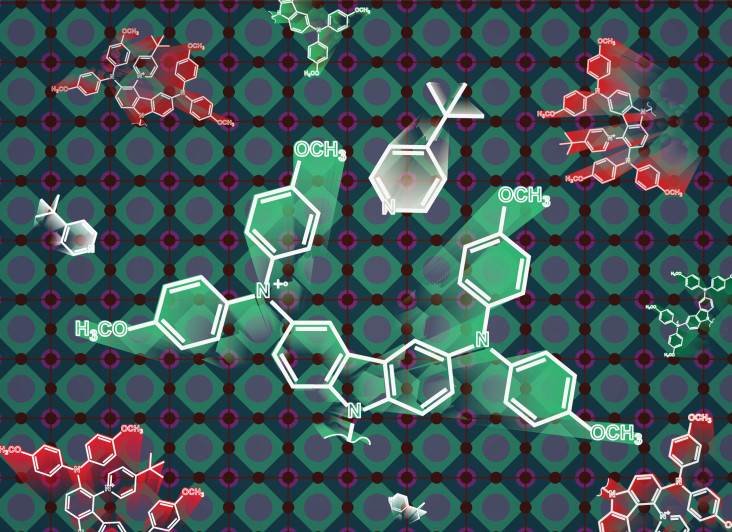While perovskites appear to be on the fast track to commercialization, concerns remain over the stability and durability of many of the materials used in them.
Chemists from Kaunas University of Technology (KTU), working with physicists at Vilnius University and the École Polytechnique Fédérale de Lausanne (EPFL), have uncovered a reaction between some of the materials most commonly used in perovskite solar cells, which could be exacerbating the short lifespan seen in such devices.
Tert-butylpyridine (TBP) is commonly used in the process of growing perovskite layers as it has been shown to improve crystallinity, and therefore the performance, of the material. The new research, however, theorizes another reaction between TBP and perovskite semiconductor materials could be contributing to the sometimes rapidly declining performance seen in such cells.
The paper ‘Pyridination of hole transporting material in perovskite solar cells questions the long-term stability’, published in the Journal of Materials Chemistry C, describes using different forms of spectrometry to confirm the negative influence of TBP on device performance.
Fewer pyridine-derivative materials in production
“We have raised a hypothesis that tert-butylpyridine, which is a routinely used additive for improving performance, is reacting with semiconductors – i.e. hole transporting materials – in the solar cells,” says Professor Vytautas Getautis, from the KTU Faculty of Chemical Technology. “Due to the reaction, the efficiency of the hole transporting material declines as the new pyridinated products are formed, and this has [a] negative influence on the performance of the cell.”
KTU’s team of chemists synthesized and characterized the products that could form from such a reaction, which could hypothetically affect performance of the hole transport material in a perovskite cell. EPFL physicists were then able to confirm both the presence of the materials in aged perovskite solar cells, and prove their negative effect on performance.
“The concentration of these products is very low after several months of ageing of the cell. However, the detection of the harmful substances after exploitation opens new avenues in the production of … long-term-stable perovskite solar cells,” adds Prof. Getautis.
KTU initially recommends using fewer pyridine-derivative materials in production, or changing the structure of the hole transport material to prevent the reaction taking place, as possible solutions.
This content is protected by copyright and may not be reused. If you want to cooperate with us and would like to reuse some of our content, please contact: editors@pv-magazine.com.




2 comments
By submitting this form you agree to pv magazine using your data for the purposes of publishing your comment.
Your personal data will only be disclosed or otherwise transmitted to third parties for the purposes of spam filtering or if this is necessary for technical maintenance of the website. Any other transfer to third parties will not take place unless this is justified on the basis of applicable data protection regulations or if pv magazine is legally obliged to do so.
You may revoke this consent at any time with effect for the future, in which case your personal data will be deleted immediately. Otherwise, your data will be deleted if pv magazine has processed your request or the purpose of data storage is fulfilled.
Further information on data privacy can be found in our Data Protection Policy.